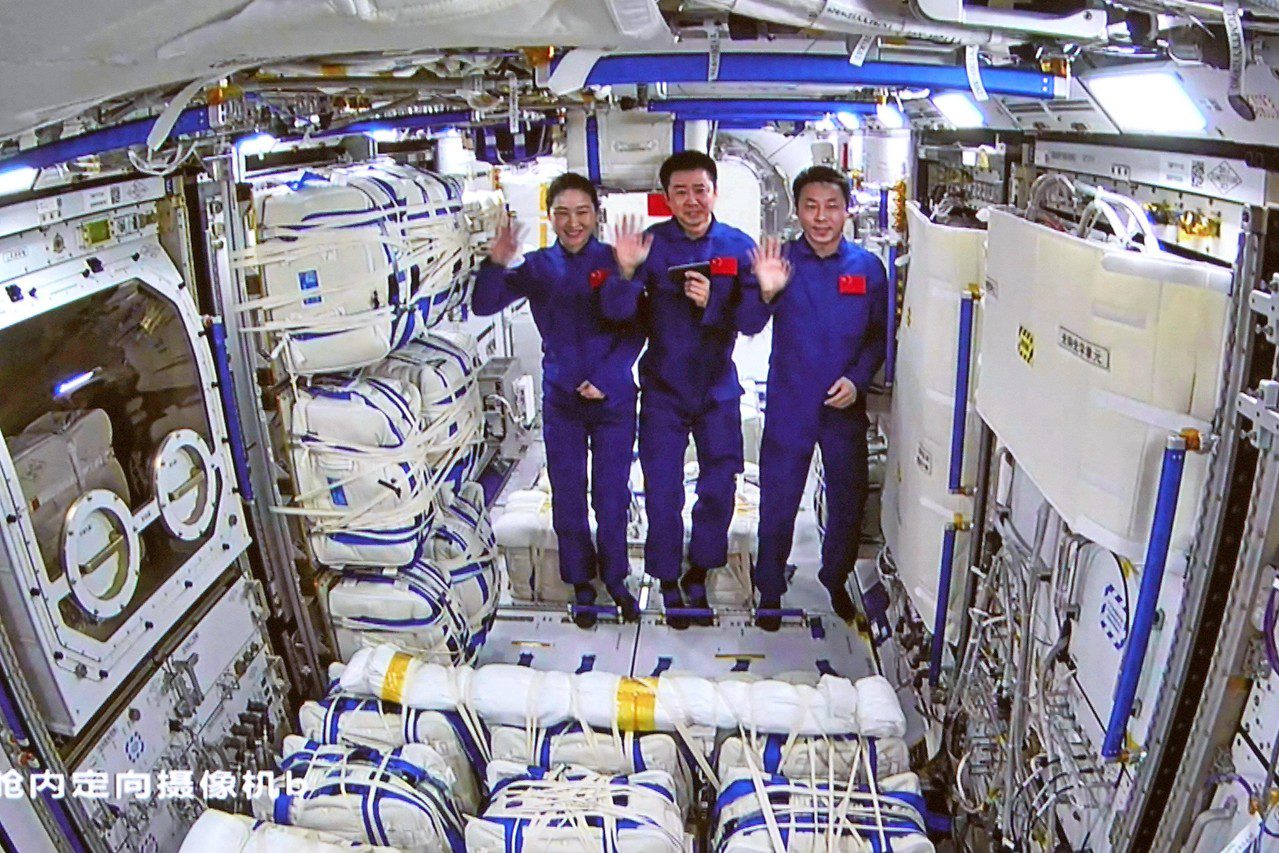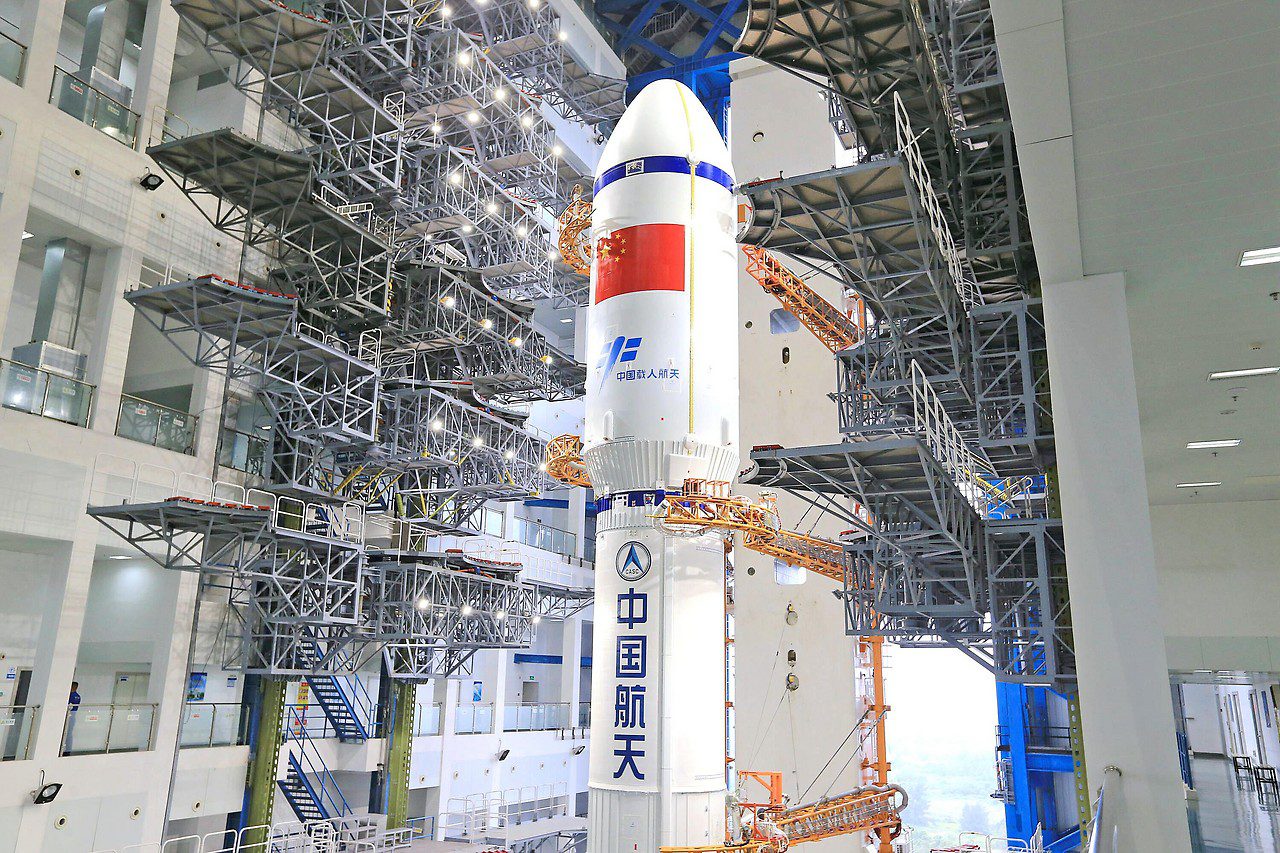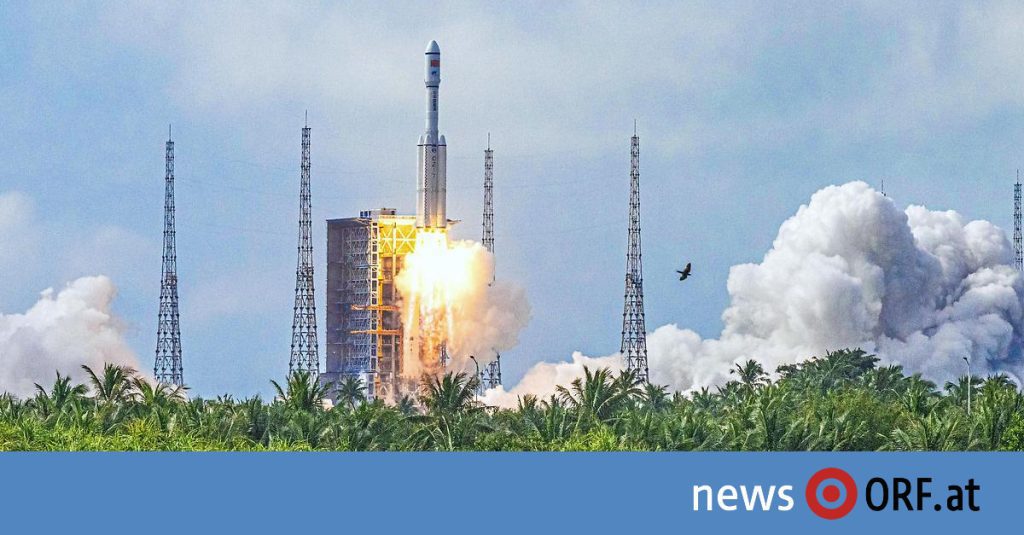In China, the unmanned spacecraft “Tianzhou 5” (Heavenly Ship) took off with the Long March 7-Y6 launch vehicle from Wenchang Spaceport on southern China’s Hainan Island on Saturday. The flight is meant to prepare for the first crew change of the space station, whose construction began last year and which has been operational since June. The “Heavenly Palace” revolves around the Earth at an altitude of 340-420 kilometers.
After the launch of the cargo spacecraft, three more astronauts may follow up — in Chinese: astronauts — by the end of the month and live on the recently completed space station with colleagues Chen Dong, Liu Yang and Kai Xuzhi. The current crew is then scheduled to return to Earth in December. According to the plan, the new crew, which will start with “Shenzhou 15” (“Magic Ship”), will remain on the space station for about six months.
Paired successfully after only 2 hours
Just 15 minutes after launch, Deng Hongqin, director of the space center, reported that “Tianzhu 5” reached orbit as planned. All systems are operating normally. The start was “successful”. The 13-ton freighter carries six tons of materials and supplies. The space program reported that it successfully docked with the space station two hours after launch.
The flight comes just 12 days after the launch of the last unit, Mengtian (“Dream of Heaven”), which was successfully connected to the T-shaped space station. It is the 12th mission to build and resupply the space station. China intends to operate the “Paradise Palace” for about ten years.
After the International Space Station: Soon the only outpost in space?
If the International Space Station closes as planned in the next few years, China will be the only country to occupy a permanent outpost in space. Through the “Sky Palace”, China is catching up with the great astronaut nations, the USA and Russia. For its ambitious goals, the People’s Republic of China has invested billions in the space program, which is run by the military and the China National Space Administration (CNSA). China is already successfully operating a rover on Mars. The country took rocks from the moon and was the first country to land a spacecraft on the far side of the moon.

In addition to the space station, China has other ambitious goals in space. A reusable spaceship could be used for this purpose by 2025. Rock samples from the moon’s polar regions will be brought to Earth within the next five years. In addition, plans are being made to establish a research station on the Moon with Russia.
The People’s Republic has very ambitious plans
One of the plans is to land on a near-Earth asteroid. China also wants to bring samples from Mars to Earth, which could happen in 2028. A mission to explore Jupiter could follow in 2029. China has also set up its own navigation satellite system, BeiDou. The space station’s plans also include a space telescope called “Xuntian”, said to be similar to the US Hubble telescope. It is scheduled to dock regularly with the “Heavenly Palace” for refueling and maintenance. It could be ready for launch in 2024.

NASA also wants to participate again
The US space agency (NASA) has shown somewhat less ambition in recent years after the termination of the “Shuttle” program, which was discontinued in 2011 and since then for flights to the International Space Station (operating jointly with the European Space Agency, the European Space Agency) depending on the Russian Space transport ships and the private US space company. But now, after a long time, it wants to send a rocket with an unmanned Orion space capsule to the moon again, on Wednesday.
NASA representative Jim Free said only Friday that there was “nothing” that would prevent the November 16 launch. The launch pad in Cape Canaveral, Florida, was inspected Thursday after Hurricane Nicole hit the area. According to Free, the storm did not reach the wind speed that could have damaged the missile. The US space agency announced Thursday that first camera inspections revealed only minor damage such as loose seals and cracks in the weather protection. Because of the approaching storm, NASA has already postponed the planned launch of its new lunar rocket on Tuesday. The Moon rocket is now scheduled to launch on Wednesday at 1:04 a.m. local time (7:04 a.m. CET), with a two-hour launch window.

“Total coffee aficionado. Travel buff. Music ninja. Bacon nerd. Beeraholic.”







More Stories
Researchers detect extremely high-energy gamma rays
Anxiety disorders in old age increase the risk of dementia
Researchers are particularly fascinated by these exoplanets.